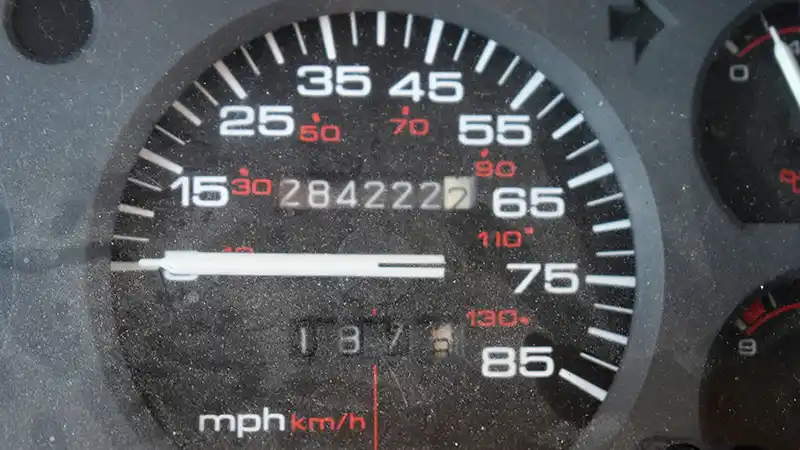Choosing the right warranty for your truck or fleet isn’t just a checkbox on your purchase order—it’s a decision that can shape your business’s financial stability for years to come. While manufacturer (OEM) warranties are standard on new trucks, third-party warranties often step in as trucks age or change hands. But which is really best for your operation? The answer depends on your vehicles, your growth plans, and how you want to manage risk.
This guide unpacks the strengths and weaknesses of both options, helping you make a confident, informed choice. We’ll dig into what each warranty type covers, where they fall short, and how they fit into real-world trucking operations.
Understanding Manufacturer Warranties
Manufacturer warranties, also known as OEM warranties, are included with new trucks and sometimes with certified pre-owned vehicles. Their main purpose is to protect you from defects in materials or workmanship for a set period—usually three to five years or up to 300,000 miles.
With OEM coverage, you’ll typically get protection for the engine, transmission, and drivetrain. Some plans also include select electronics or emissions systems. The catch? Repairs must be performed at authorized dealerships, using OEM parts and certified technicians.
This can be reassuring early in your truck’s life, but the limitations quickly become clear. Once you hit the time or mileage cap, you’re on your own for repair costs—unless you purchase an extension. These warranties also tend to exclude “wear and tear” items like brakes and clutches, as well as damage from improper maintenance.
Extended OEM Warranties
If you want to stick with the manufacturer, many dealers offer extended warranties for an additional fee. These plans usually mirror the original coverage but come with more exclusions and a higher price tag. The process for filing claims can be more complex, and you’ll need to read the fine print carefully to understand what’s truly covered.
Third-Party Warranties: Flexibility for Real-World Trucking
Third-party warranties are service contracts from independent companies, designed for used, older, or high-mileage trucks. They’re popular with owner-operators and fleets that want to keep vehicles protected long after the OEM coverage expires.
What sets third-party warranties apart is their flexibility. Many cover a wider range of components, including electronics, seals, gaskets, HVAC, suspension, and even towing reimbursement. You’re usually free to choose your own repair shop—a major advantage if you break down far from a dealership or want to avoid long waits.
Payment terms are also more accommodating. Instead of a big upfront cost, you can often pay weekly, monthly, or annually. Many plans offer “no long-term contract” options, so you can adjust coverage as your fleet evolves.
Who Benefits Most?
• Used Truck Buyers: Most used trucks are out of OEM warranty, making third-party coverage essential.
• Mixed-Age Fleets: Cover all vehicles, regardless of age or mileage.
• Owner-Operators: Get affordable, tailored protection and freedom of repair shop choice.
While manufacturer warranties offer peace of mind for new trucks, they’re restrictive in scope and duration. Third-party plans, by contrast, are built for flexibility, broader coverage, and real-world convenience.
Real-World Scenarios
Scenario 1: The New Truck Owner
You buy a brand new Class 8 truck. For the first three years, your OEM warranty has you covered for major breakdowns. Repairs are handled at authorized dealerships, and you don’t worry about big repair bills. But as soon as you hit the mileage cap, you’re responsible for all costs—unless you pay for an expensive extension.
Scenario 2: The Used Truck Fleet
You run a fleet of used trucks, each with different ages and mileages. OEM warranties are long expired, but a third-party provider lets you protect every vehicle with a single, flexible plan. Repairs can be done at your preferred shops, and you avoid big surprises when something breaks.
Scenario 3: The Owner-Operator
You buy a used truck with no remaining warranty. A third-party plan lets you pay weekly, choose your own repair shop, and get back on the road quickly if something goes wrong—without draining your cash reserves.
Pros and Cons: Manufacturer vs. Third-Party
Manufacturer Warranties:
Pros:
• Included with new purchase
• OEM parts and certified technicians
• Simple claims process at dealerships
Cons:
• Short coverage window
• Limited to major systems
• Must use authorized repair centers
• Expensive to extend
Third-Party Warranties:
Pros:
• Available for used/older trucks
• More covered components
• Flexible payment options
• Freedom to choose repair shop
• Transparent coverage and fast claims (with the right provider)
Cons:
• Quality varies between providers
• Some require more documentation
• Not all are transferable (always check terms)
How to Choose the Right Warranty
Start by assessing your needs:
• Truck Age & Mileage: If your truck is out of OEM warranty, third-party is your best bet.
• Usage: Long-haul, local, or vocational? Make sure the plan fits your operation.
• Fleet Size: Mixed fleets benefit from the flexibility of third-party coverage.
Evaluate providers on reputation, transparency, and customer support. Ask direct questions:
• Can I use my preferred repair facility?
• How quickly are claims processed?
• Are all covered parts listed up front?
• Is there a “no long-term contract” option?
• Are there cash-back or loyalty benefits?
Don’t hesitate to request sample contracts. The best providers are happy to answer your questions.
Common Myths & Misconceptions
• “Third-party warranties are a scam.”
• Not true. Reputable providers offer transparent, comprehensive coverage—just be sure to check reviews and demand a full coverage list.
• “OEM warranties are always better.”
• They’re great for new trucks, but coverage fades as vehicles age. Third-party plans fill the gap.
• “Warranties are too expensive.”
• The cost of a single major repair can easily surpass years of warranty payments.
Conclusion
The right warranty is more than a piece of paper—it’s peace of mind, predictable costs, and business continuity. Manufacturer warranties are a great starting point for new trucks, but as your fleet ages or grows, third-party plans offer the flexibility, coverage, and value you need to stay ahead.
Want to learn more?
• Explore TruckClub™’s comprehensive warranty plans
• Read about the hidden costs of truck repairs
• Get best practices for managing fleet warranties
Still have questions?
Reach out to our team for a free coverage consultation and see how TruckClub™ can help you safeguard your trucks and your bottom line.
Related Articles:
Ultimate Guide to Truck Warranties
Hidden Costs of Truck Repairs












